Build a Persuasive Demo
Learning Objectives
After completing this unit, you’ll be able to:
- Create an effective demo.
- Use storytelling in your demo.
- Prepare your technology to demo seamlessly.
Choose What to Demo
We learned in the second unit that it’s a good idea to break up your presentation with moments of interaction. You can either create opportunities for participant interaction or give a demo of some kind. Demos are great, because they show the magic behind the curtain. They help your audience really see how something is done.
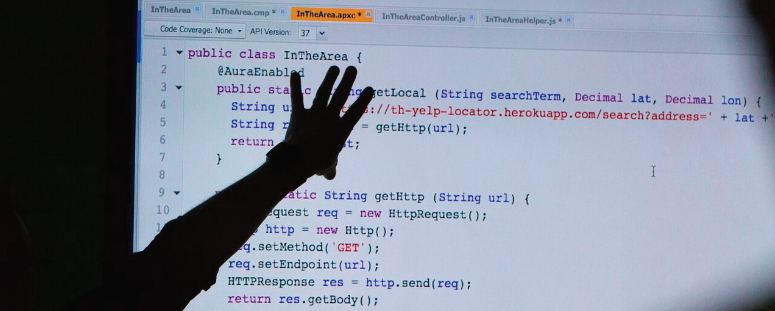
Nyah and Lek’s presentation is 40 minutes long. They plan to devote roughly half the time to interactive material, including demos. #DemosRule
Tell a Story with Your Demo
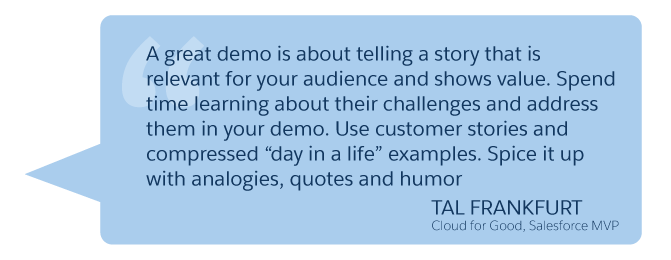
“A great demo is about telling a story that is relevant for your audience and shows value. Spend time learning about their challenges and address them in your demo. Use customer stories and compressed ‘day in a life’ examples. Spice it up with analogies, quotes and humor.”—Tal Frankfurt (Cloud for Good, Salesforce MVP)
Once you decide on what to demo, you’ll also need to decide how to set the scene. You can do that in one of two ways.
- Independent Demos—Each demo exists on its own, with no story connecting them (other than that you think all the demos are cool things to show).
- Interconnected Demos—You connect all your demos with one coherent storyline.
While either option is valid, it can be more enjoyable for your audience to be taken on a coherent journey, with demos interspersed as part of the storyline. When you do this, you’ll want to keep your audience in mind as you build out your characters.
Speaking of characters…if your audience is mostly developers, then it’s a good idea to make your main character a developer. Same goes for an admin or business user audience. This doesn’t mean that you can’t include other types of characters—perhaps you’re an admin who gets requests from the head of sales—but the main character should be someone your audience relates to. If you’re co-presenting, you may choose different roles for different presenters and create a dialog between them.
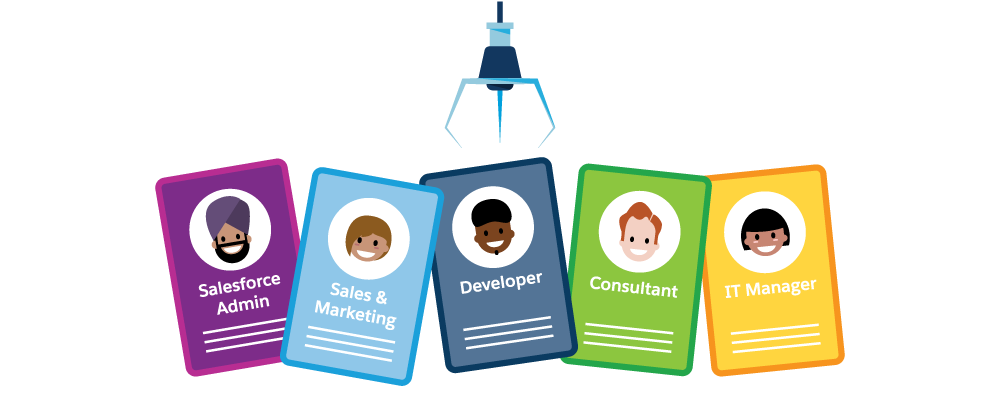
Because the story that Nyah and Lek are telling is about how they overcame their own struggles, they’ll use themselves as the characters in their presentation and demo. They’ll show simplified (but still real-world) examples of components they’ve developed.
They take a look at the three tip sections of their presentation and come up with a short list of components they built that demonstrate the tips. After some discussion, they come up with a good demo for each tip. They plan to tag team doing the demos.
If you’re having a hard time choosing what to demo, look for something that will make the most impact and tells the best story.

“To get your audience involved requires you having a great story. Your listeners want to be taken on a journey. Stories allow your listeners to place themselves in your presentation and make real connections.”—Shonnah Hughes (MIA, Salesforce MVP, Salesforce WIT Diversity Leader)
Demo Logistics
You know how to choose what to demo and how to incorporate the demo into your presentation. Let’s talk for a moment about how to actually conduct the demo.
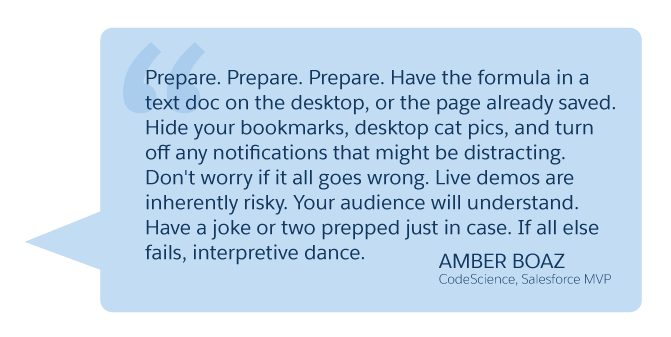
“Prepare. Prepare. Prepare. Have the formula in a text doc on the desktop, or the page already saved. Hide your bookmarks, desktop cat pics, and turn off any notifications that might be distracting. Don't worry if it all goes wrong. Live demos are inherently risky. Your audience will understand. Have a joke or two prepped just in case. If all else fails, interpretive dance.”—Amber Boaz (Code Science, Salesforce MVP)
Running Your Demo
There are different ways you can present your demos.
- Go Solo—The same person can run the demo and talk about what they’re doing.
- Tag Team—One person can run the demo while the other person speaks to it. Note that even if you’re a solo presenter, you can still have someone run all your demos for you (aka Dreamforce Keynote Style) while you talk.
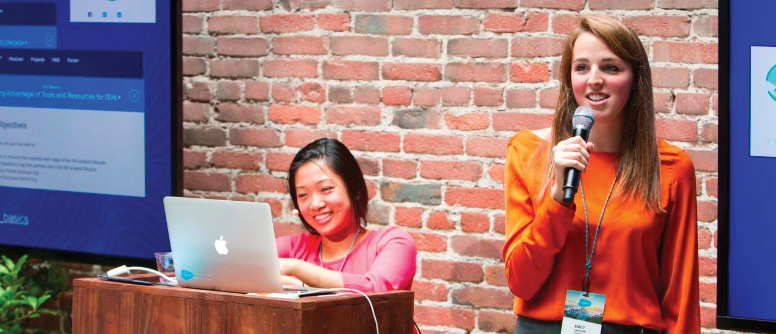
Deciding on Demo Technologies
Another thing to work out is which devices and user experiences you want to use in your demo.
- Mobile device or laptop
- Salesforce Classic or Lightning Experience
While you can choose to demo on anything, unless you have a need, keep it simple. Switching between environments, applications, and devices takes time and can be distracting to your audience. Try to plan your presentation in a way that minimizes the number of switches you make.
We talked with Salesforce’s own keynote demo-master LeeAnne Templeman about her favorite tips for technical demos.
- Plan your demo—Write out your click path and script for your demo and rehearse it.
- Clean your space—Clean your demo screens, close unrelated applications, and turn off all notifications. No one wants to see what’s on your desktop.
- Rehearse your demo—Practice switching between your presentation and your demo (that can be tricky when you’re in presenter mode). If you’re switching between screens or apps on a laptop (for example, between developer console and Lightning Experience) using multiple desktops, using gestures or hotkeys can be a useful and clean way to move between the screens quickly. You can also use alt + tab to toggle between your applications.
- Plan for glitches—Prepare for problems with Internet connections or technology. Have screenshots or video of your code and any screens you want to show. You can always talk through the static images if you get stuck.
At this point you’ve got a great slide deck, an awesome demo, and it’s time to take the stage…but wait…you’ve built this great presentation, but you have a sudden thought…what if no one comes to your presentation? (Cue the ominous music.)
No problem! In our next unit, we’ll cover how to promote your session. We’ll also show how to bring your audience into the conversation before, during, and after your session.